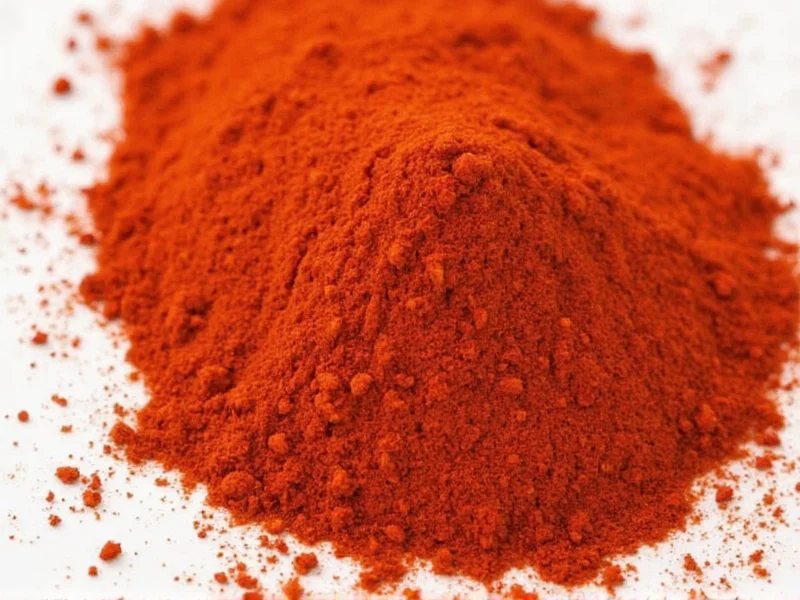The best substitutes for paprika depend on which variety you need to replace. For sweet paprika, use chili powder (1:1 ratio) or a pinch of cayenne with tomato paste. For smoked paprika, combine regular paprika with a drop of liquid smoke or use chipotle powder. For color without heat, try tomato powder or beet powder. Always adjust quantities based on your recipe's requirements and desired flavor profile.
When you're in the middle of cooking and realize you've run out of paprika, knowing reliable alternatives can save your recipe. Paprika—a vibrant red spice made from ground peppers—comes in several varieties including sweet, hot, and smoked, each serving different culinary purposes. Understanding what gives paprika its distinctive flavor and color helps identify the most appropriate substitutes for your specific cooking needs.
Understanding Paprika's Role in Cooking
Paprika isn't just a coloring agent; it contributes distinctive flavor notes to dishes. Sweet paprika offers mild pepper flavor with subtle fruitiness, while smoked paprika (pimentón) adds deep, woody notes from peppers dried over oak fires. Hot paprika brings noticeable heat. When seeking substitutes for paprika in recipes, consider whether you need to replicate the color, the mild pepper flavor, the smokiness, or the heat—ideally all these elements.
Top Substitutes for Different Paprika Varieties
The right paprika replacement depends on which characteristic matters most for your dish. Here's a detailed breakdown of effective alternatives:
For Sweet Paprika
When your recipe calls for standard sweet paprika, these alternatives work best:
- Chili powder - Use a 1:1 ratio, but be aware most chili powders contain additional spices like cumin and garlic powder
- Red bell pepper powder - Provides similar color with milder flavor (use 1:1 ratio)
- Tomato paste + pinch of cayenne - For color and mild heat (1 tbsp tomato paste + 1/8 tsp cayenne per 1 tsp paprika)
For Smoked Paprika
Replacing the distinctive smokiness requires more creativity:
- Liquid smoke + regular paprika substitute - Add 1-2 drops liquid smoke per teaspoon of alternative spice
- Chipotle powder - Use half the amount (it's significantly hotter)
- Smoked sea salt + sweet paprika substitute - For dishes where salt content can be adjusted
For Hot Paprika
When heat is the primary characteristic you need to replicate:
- Cayenne pepper - Use 1/4 to 1/2 teaspoon cayenne for every teaspoon of hot paprika
- Crushed red pepper flakes - Use half the amount, finely ground
- Hot chili powder - Check label for heat level before substituting 1:1
| Original Paprika | Best Substitute | Substitution Ratio | Best For |
|---|---|---|---|
| Sweet Paprika | Chili Powder | 1:1 | Chili, stews, rubs |
| Sweet Paprika | Tomato Paste + Cayenne | 1 tbsp paste + 1/8 tsp cayenne per tsp paprika | Sauces, soups needing color |
| Smoked Paprika | Chipotle Powder | 1:2 (use half) | BBQ recipes, bean dishes |
| Smoked Paprika | Paprika Substitute + Liquid Smoke | 1 tsp substitute + 1-2 drops liquid smoke | Any smoked paprika recipe |
| Hot Paprika | Cayenne Pepper | 1:4 (use quarter) | Spicy dishes needing heat |
Special Considerations When Substituting Paprika
Not all paprika alternatives work equally well in every application. Consider these factors when choosing what to use instead of paprika:
For color without flavor: If you're primarily using paprika for its vibrant red color rather than flavor (as in deviled eggs or potato salad), tomato powder or even a small amount of beet powder can provide similar visual appeal without altering the flavor profile significantly.
For spice blends: When substituting in spice rubs or seasoning blends, remember that paprika often serves as a base that carries other flavors. In these cases, chili powder usually works better than single-ingredient alternatives because it already contains complementary spices.
For liquid dishes: In soups, stews, and sauces, tomato-based substitutes work particularly well as they integrate smoothly. For these applications, a combination of tomato paste and a small amount of cayenne often produces the most authentic results when you need a paprika replacement for cooking.
For dry rubs: When creating meat rubs, powdered alternatives maintain the proper texture. Ground chipotle works especially well for smoked paprika substitutions in dry rubs for meats.
Testing Your Paprika Substitutes
When experimenting with paprika alternatives, start with less than you think you need. You can always add more, but you can't remove excess spice once incorporated. Taste as you go, especially when using hotter alternatives like cayenne. For baked goods or dishes with long cooking times, remember that spice flavors often mellow during cooking, so you might need slightly more substitute than the ratio suggests.
Professional chefs often keep multiple paprika substitutes on hand for different applications. Building your own small collection of alternative spices ensures you're never without an appropriate replacement when cooking. The key to successful substitution is understanding what aspect of paprika your recipe truly needs—color, mild pepper flavor, smokiness, or heat—and selecting your alternative accordingly.











 浙公网安备
33010002000092号
浙公网安备
33010002000092号 浙B2-20120091-4
浙B2-20120091-4